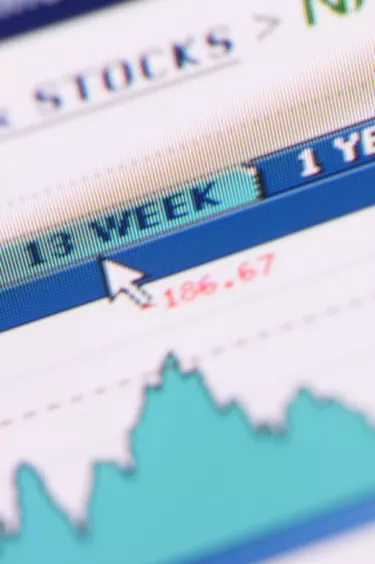
You can calculate a common stock's required rate of return using the capital asset pricing model, or CAPM, which measures the theoretical return investors demand of a stock based on the stock's market risk. Market risk, or systematic risk, is the risk of a stock related to the overall stock market and cannot be diversified away by adding a stock to a portfolio of other stocks. A stock with higher market risk has a greater required return than a stock with a lower one because investors demand to be compensated with higher returns for assuming more risk.
Step 1
Determine a stock's beta, a measure of its market risk. A beta of 1 means the stock has the same risk as the overall market, while a beta greater than 1 means the stock has more risk than the market. You can find a stock's beta in the quote section of a financial website that provides stock quotes. For example, use a stock's beta of 1.2.
Video of the Day
Step 2
Determine the market's risk-free rate of return—the return you can earn on an investment with zero risk. Use the current yield on U.S. treasury bills. The U.S. government guarantees these investments, which makes them virtually risk-free. You can find treasury yields widely published on financial websites or the business section of a newspaper. For example, use a risk-free rate of 1.5 percent.
Step 3
Estimate the market risk premium, the excess return stock investors require over the risk-free rate of return for taking on the risk of investing in stocks. Subtract the risk-free rate of return from the expected return of the overall stock market to calculate the risk premium. For example, if you expect the overall market to generate 10 percent returns over the next year, subtract the 1.5 percent risk-free rate, or 0.015, from 10 percent, or 0.1. This equals a market risk premium of 0.085, or 8.5 percent.
Step 4
Substitute the values into the CAPM equation, Er = Rf + (B x Rp). In the equation, "Er" represents the stock's expected return; "Rf" represents the risk-free rate; "B" represents beta; and "Rp" represents the market risk premium. In the example, the CAPM equation is Er = 0.015 + (1.2 x 0.085).
Step 5
Multiply beta by the market risk premium and add the result to the risk-free rate to calculate the stock's expected return. For example, multiply 1.2 by 0.085, which equals 0.102. Add this to 0.015, which equals 0.117, or an 11.7 percent required rate of return.
Video of the Day